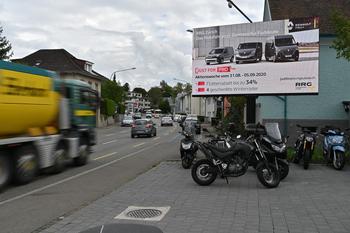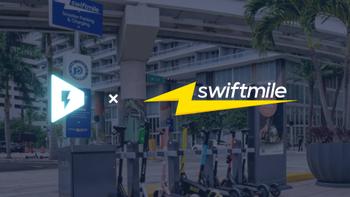DOOH’s growth trajectory has been one of the strongest and most exciting across the media landscape – and the year ahead in 2022 is looking no different. With a higher demand than ever for flexibility, buying efficiency, and greater targeting and creative capabilities, the rise of programmatic trading in digital out-of-home shows no sign of slowing down.
As the adoption of programmatic DOOH grows amongst agencies and brands, OOH publishers around the world are looking to prepare their networks to offer more robust PDOOH trading to meet rising global demand.
But, as a publisher, how can you make sure your network is primed to take full advantage of this new revenue opportunity? Let’s take a look at five ways you can prepare your DOOH network for what’s sure to be a record year for PDOOH.
Standardize inventory where possible
Whether you’re just starting your DOOH network or performing ongoing maintenance of your existing inventory, standardizing your hardware wherever possible should be a key pillar for any publisher. Different screens and players come with their own unique capabilities and limitations which can determine whether your entire DOOH portfolio is eligible for PDOOH trading, or if you’ll be forced to reduce your offering to compensate for the variety of manufacturers used. Finding a reliable combination of screens, players, and connectivity – and sticking to the formula – will make any ongoing maintenance and integration with PDOOH tech players a much more streamlined process.
Connectivity is also key here, with a wired connection providing better stability and results. In order to facilitate the shift towards RTB, as well as greater creative capabilities like HTML5, having a reliable connection across your locations will set you up for advancing your PDOOH offering.
Get granular with your audience figures
OOH has long operated off the key metrics of reach and frequency, which are usually calculated across a campaign period of multiple weeks. With the advent of programmatic trading comes the shift towards a new, more agile, and universal metric – impressions. Depending on the SSPs you integrate with, those impressions numbers can be broken down into specific categories across a number of demographics, as well as a more granular level of timing.
Providing audience impressions that show an ebb and flow of traffic by the hour or day of the week, for example, will go a long way towards more productive conversations with buyers who want to see that OOH is becoming more flexible and accurate in terms of audience measurement. Further demographic categorization, like gender and age bracket splits, will establish a foundation for more comprehensive reporting for buyers, as well as more effective targeting capabilities through integrated DSP platforms.
Dedicate resources to PDOOH sales, locally and internationally
For many publishers, the majority of revenue will continue to come from traditional sales (at least for now). Creating a dedicated team tasked with generating PDOOH sales will allow your business to establish a new network of potential buyers in the form of digital agencies and trade desks. Another benefit of a dedicated PDOOH sales team is the possibility of creating a closer working relationship with the SSPs and DSPs your network is using – on both a local and international level.
Beyond the local market that your sales team is accustomed to serving, PDOOH trading opens up a whole new world of buyers in the form of international agencies, DSPs, and brands looking to purchase your inventory. With greater visibility for local networks across the global portfolio DSPs that their SSPs are integrated with, there’s an opportunity for sales teams to venture beyond their local market to find new sources of revenue looking to trade on an international scale.
Expand your creative capabilities
Being able to trade programmatically is one thing, but offering all the benefits that go with it is another. For many clients, it’ll be important to know that they can run dynamic creative optimization campaigns that generate hundreds of creatives at the click of a button or be able to adapt their HTML5 creative from other online mediums directly onto your screen.
The standardization of screens and resolutions also goes a long way towards minimizing the need for multiple creative sizes wherever possible. Connectivity is another important factor – knowing that your network will be able to adapt to and play whatever creatives might come your way. Some networks have complicated security and networking structures that prevent these types of creatives from being served in real-time, so establishing what’s needed to simplify and streamline your network to capitalize on new innovations in creatives is key.
Integrate with a global SSP
Depending on your network, like how it’s structured and the number of inventory types, integrating with an SSP can vary from a relatively simple process to a complicated one that involves third parties and requires more time and resources.
When starting out with PDOOH, it’s important to ensure each integration counts so your team can get started on growing your offering in the market. Here are a few key things to look for in your partners:
Compatibility
Some SSP integrations can be easier than others depending on the CMS you use for your network. Most global SSP players have processes in place to align with the major CMS systems and media players, but it’s an important conversation to have upfront to see how your system might change the integration process.
Existing integrations
There are two levels to consider when it comes to existing integrations. One is the SSP’s integration with other publishers, as the centralization of inventory makes it easier for the DSPs and therefore buyers when trying to plan their campaigns. The second is the SSP’s integrations with DSPs from both local and international markets. The more DSPs they’re connected to, the broader the visibility your network will have amongst buyers from global markets.
DOOH capabilities
With programmatic campaigns traditionally priced on a one-to-one impression basis, DOOH is unique in operating on a one-to-many basis, as one ad can be viewed by hundreds or even thousands of people at any given time. When integrating with an SSP, it’s important to ensure that the SSP can accurately support DOOH audience measurement by reflecting the reach of each screen – usually via the use of an impression multiplier. If the impressions are not accurately communicated, media owners risk undervaluing the medium by selling their inventory on a one-to-one basis.
As PDOOH continues to grow into an established advertising channel, more and more OOH publishers will make their digital inventory available programmatically to meet media buyer demand. From selling targeted impressions to trading on an international scale, PDOOH is giving publishers more control over their network than ever before – provided they take the necessary steps to ensure they’re ready to dive into the world of programmatic trading.
To learn more about getting your network started with programmatic, contact us for more information and a personalized demo of our programmatic solution, Broadsign Reach.
If you and your team are ready to level up your programmatic DOOH knowledge ahead of another record year for the channel, you can use this link for a 15% discount on doohx’s foundational certification course ‘PDOOH 101’.
Already a Broadsign customer? Contact your account manager for more information.






